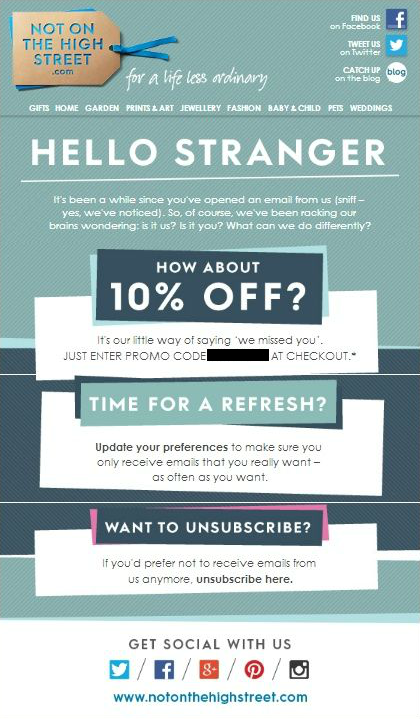How to take advantage of GDPR in Email Marketing

On Friday, May 25, the famous new General Data Protection Regulation (GDPR). From Digital Response we want to contribute our point of view as specialists in Email Marketing showing how we can take advantage of this new policy.
Before we look at how we can do this, let's remember what GDPR is, what its purpose is and how it affects email marketing.
What is the GDPR and what does it consist of?
What is its objective?
- Ensuring that the The user registration or recruitment process is optimal and clear.
- Ensuring that the subscriber really wants to receive communications from "X" company or brand
- By obliging users of a database to be able to unsubscribe at any time
- Unifying the laws between EU countries, as in some countries the legal framework was much more restrictive than in others.
How does it affect email marketing and my business?

 If the answer is "YES". and historically you have done things right: you have done the opt-in correctly, subscribers have been able to unsubscribe without any problem, etc.; you are complying with the new regulations.
If the answer is "YES". and historically you have done things right: you have done the opt-in correctly, subscribers have been able to unsubscribe without any problem, etc.; you are complying with the new regulations.
 However, if the answer is "NO" and you have historically done a bit of dubious canvassing, you would be outside the new regulations and it would be more than advisable to send an email and ask the user if they want to continue receiving your communications and how we are going to use their data from now on.
However, if the answer is "NO" and you have historically done a bit of dubious canvassing, you would be outside the new regulations and it would be more than advisable to send an email and ask the user if they want to continue receiving your communications and how we are going to use their data from now on.
Improve open rate, bounce rate and drop rates
If you eliminate from your database those users who do not want to receive your emails, the quality of your database will automatically improve. Think that they are users who are not interested in the contents of your emails and surely you have already invested time and effort in reactivation actions to convert them into active users. Clean your database without fear and you will get a better reputation as a sender. This translates into a clear improvement of openings, bounce rate and decrease of future casualties.
Take advantage of double opt-in and go for progressive registration
With the double opt-in the user will have to confirm that you really want to subscribe to your newsletter. The process works as follows: the user must first register on the website and then receive an email confirming their subscription. We encourage you to use the progressive registration which consists of proposing to the user a registration process in phases. In the first phase, we will only ask the user for the opt-in (low friction, high registrations/visits ratio). Once the user has opted-in, they will enter the second phase, in which we will ask them to "enrich" their profile with more information. In this way, there is no penalty for obtaining as many registrations as possible and we take advantage of the inertia of the moment to obtain relevant information from the user.
Implement an email where the user can decide whether to unsubscribe.
As we all know, the user should be able to unsubscribe easily and whenever they want. A good idea would be to include this option in an original email that offers the user other possibilities. Here you can see two examples. The first one is clear and direct. It simply asks the subscriber to confirm whether or not they want to continue receiving communications from the brand. The second one is more original, complete and offers 3 possibilities to the user.
- An attractive discount to encourage you to continue to be registered and active.
- Change your preferences to receive content of interest to you
- Permanent deregistration


We must remember that a reactivation email or farewell may be the last opportunity for contact with the user and we must take advantage of it.